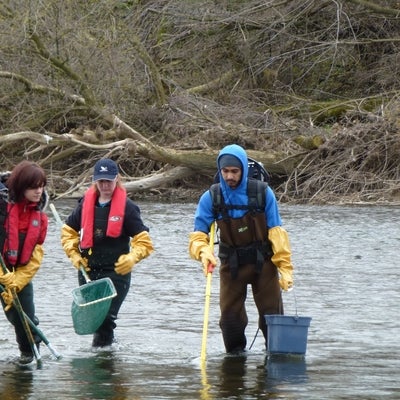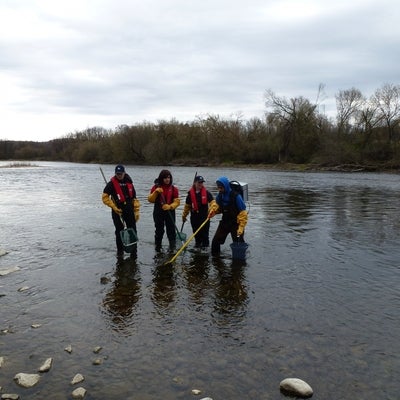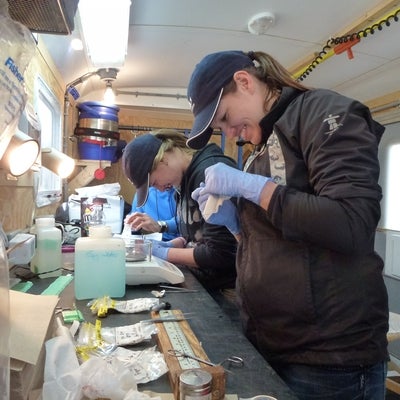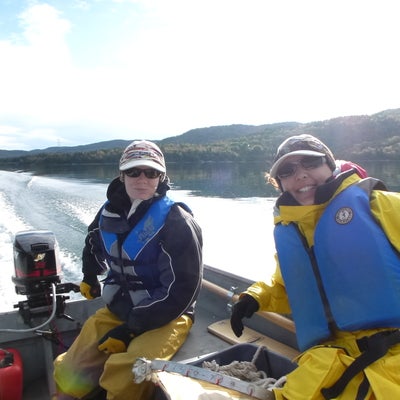Research Overview
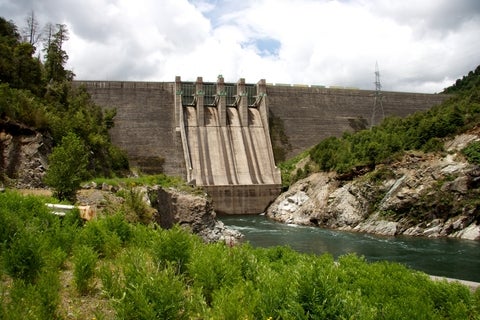
Human activities within watersheds can have very serious negative impacts on aquatic ecosystems. Environmental contaminants originating from urbanization, agriculture and industrial development usually enter receiving waters as complex mixtures from these activities and we currently have a very poor understanding of how they impact ecosystems. In addition, sensitivity and resiliency of aquatic communities to adapt to natural and human induced stressors differs considerably across watersheds from their headwater tributaries to the mouth. The risk created by these activities is difficult to define, and more chemicals of concern continue to emerge (endocrine disruptors, nanoparticles, etc.). In addition natural environments are quickly changing in response to human pressures such as altered land use, climate and habitat destruction.
It is essential that we find ways to address and mitigate these pressing concerns to ensure the sustainability of ecosystems for the future. My research group creates knowledge to support model development to better predict how ecosystems, especially fish, are affected by complex contaminant mixtures and how they are modified by multiple stressors, environmental conditions and ecosystem traits. We focus on highly impacted watersheds where we develop, test and apply innovative tools and approaches that enhance our ability to understand, predict and mitigate these complex responses.
Because contaminants usually exist as very complex mixtures it is often very difficult to isolate the chemicals responsible for effects in the environment. Our lab is engaged in developing Effects-Directed Assessments (EDA) to isolate and identify chemicals linked to specific mechanisms (such as estrogenicity). Effluents or environmental samples are extracted, fractionated (e.g. HPLC) and tested with specific in vitro bioassays. Bioactive fractions are investigated with advanced analytical techniques, such as mass spectrometry, to identify the chemicals present.

Once we have identified target chemicals we develop analytical methods and techniques to measure them in complex environmental matrices (effluent, water, biota). We are fortunate to have a state-of-the-art trace analysis lab that includes automated extraction (Auto-Trace, ACE) and detection instrumentation (LC-MS/MS and GC-MS). In our recent studies we have documented the distribution of emerging contaminants of concern in drinking water, wastewater, surface waters, aquatic organisms. We recently developed and applied in vivo SPME to be able to sample and release fish alive with minimal impacts.
We study the natural processes within watersheds and how they alter the fate and distribution of priority and emerging contaminants in aquatic environments. We examine the factor that influence the partitioning, transport and bioavailability of contaminants to various species across watershed gradients. Using models (e.g. WASP) we predict the exposure of organisms in relationship to multiple sources and try to make linkages to effects in ecosystems.


A major research area in the lab is related to making these linkages between stressors (chemicals, effluents, etc.) and effects on fish in watersheds. Starting with exposure we explore Adverse Outcome Pathways (AOP) that lead to effects of concern in wild populations. We have the ability to examine gene expression and relate this to changes at higher levels of biological organization such as physiology (e.g. steroid production) and whole organism changes. We test and validate our hypotheses in our Wet Lab facilities with specific chemicals or effluents or do testing directly at sites (e.g. treatment plants) in our mobile trailers.
Using modern collection techniques (e.g. electrofishing backpacks, punt or boats available in our lab) we are able to sample wild fish across diverse habitats in watersheds. We examine impacts in fish at the population and community level and attempt to build relationship to specific chemical exposure, mechanisms and effect.
Much of our current work has focused on the biology and responses in the small fish (rainbow darter) that are widely distributed in the local Grand River watershed. Wastewater exposure has been shown to cause changes in gene expression, physiology (intersex), energy assimilation and allocation, reproductive behaviour and performance. This results in changes in the fish community downstream of the outfalls. We are now creating a framework to be able to assess the cumulative effects of multiple stressors in complex effluents and across watershed gradients.
Our work is also developing risk management and mitigation approaches that can be applied to minimize environment and human health risk. We are working to develop and test a variety of water treatment technologies with our partners (e.g. advanced oxidation, nanowires). A major focus is assessing the effects of major infrastructure and process changes in municipal treatment plants and pulp mills on fish and aquatic ecosystems. Working with our partners we hope to find effective solutions to reduce the environmental exposure and effects of contaminants.
Also see how our lab pivoted to COVID-19 wastewater surveillance during the pandemic.
Visit our publications page to get more details on our research or visit the profile of our researchers and students. We are often recruiting new students so if you are interested in a career in ecotoxicology feel free to contact Prof. Mark Servos.
